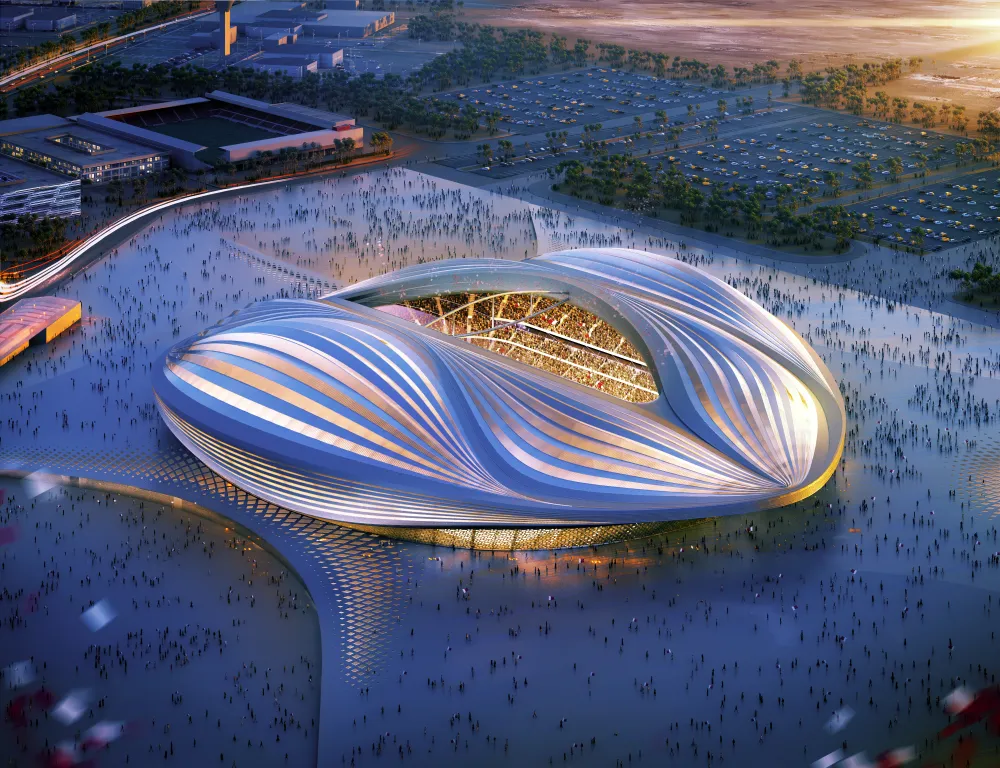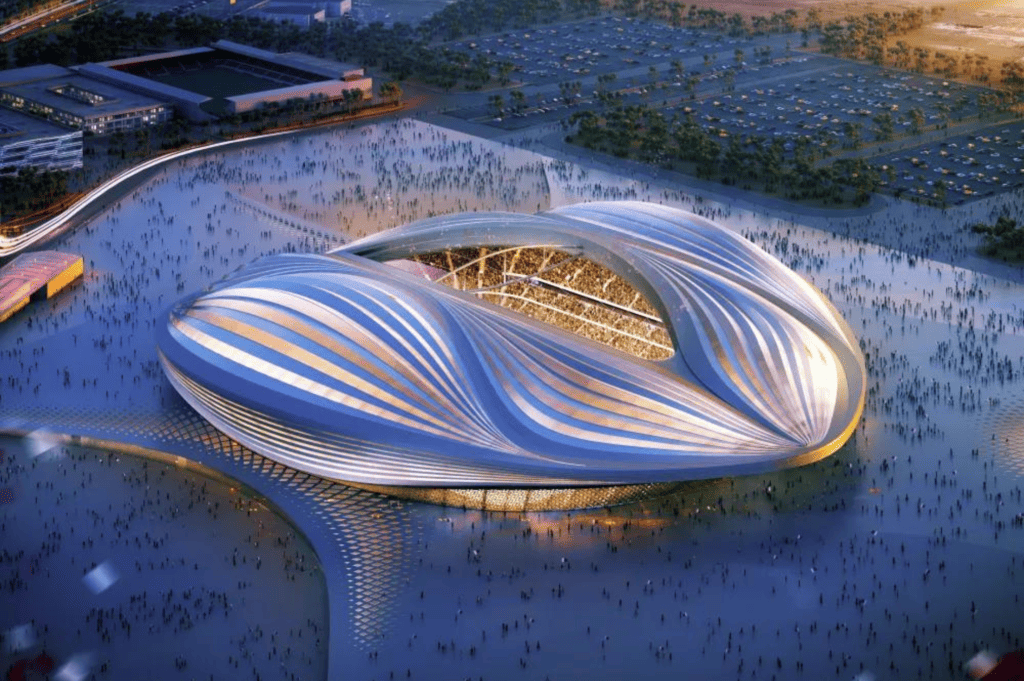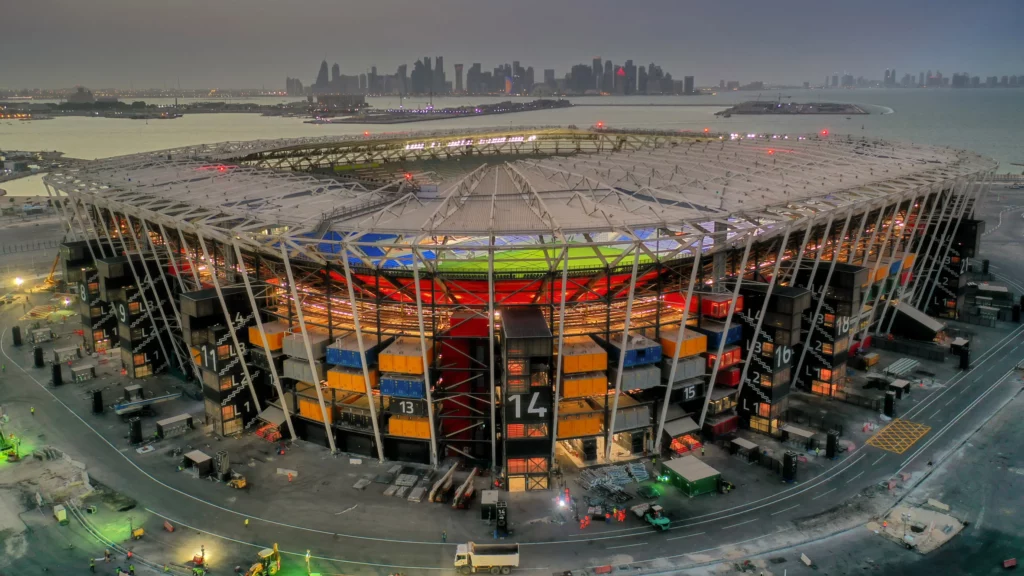It’s coming home, it’s coming home… Architectural Technologist, and avid football fan Joseph Cattmull looks at the architecture of the stadiums that are playing host to the 2022 Qatar World Cup.
It’s not unfair to say the upcoming Qatar World Cup has its fair share of, deserved criticism and controversy. However, from a solely Architectural aspect there are plenty of developments to look into. Middle Eastern architecture is usually very showy and, in your face, and the Lusail Stadium, the largest of the tournament, is no different


The world renown London Architects Foster + Partners lead the design for the centre piece stadium. Head of studio Luke Fox said “our ambition was to create a striking yet simple form that reflects the buildings’ function, responds to the climate of Qatar and enhances the theatre of the event”. The design of the stadium takes inspiration from traditional Islamic bowls and the surrounding architecture, with its curved golden façade with triangular openings to allow light to pass through to the concourses.
Sadly, I must say, as the centre piece of the World Cup I do find the Lusail Stadium uninspiring and certainly not iconic, as any stadium to host a World Cup final should be. Some stadiums build their iconic status’ through their history, for example the Maracanã in Brazil, however a purpose build new development must rely on its architectural design to create the grounds icon status and unfortunately The Lusail Stadium fails to do so.
Contrary to the Lusail stadium, one stadium that does catch my eye is Stadium 974. Named to highlight the use of 974 shipping containers within the design & structure (alongside a steel frame). As mentioned above, Middle Eastern architecture is often associated with being very “blingy”, yet Stadium 974 is the polar opposite of this. Instead taking inspiration, some may say too literally, from Qatar’s maritime history and the industrial heritage of its location.
On the topic of the 40,000-seaters design, the modularly constructed stadium was designed by Spanish architects practice Fenwick Iribarren Architects and is actually the first temporary stadium in FIFA World Cup history. It makes use of shipping containers, of which most were used to ship materials into Qatar for the other stadiums construction. Touching back on what makes a stadium iconic, I feel Stadium 974, being the first modular temporary World Cup stadium coupled with its unique design, makes it the closest to achieving this feat.
Maybe, the most notable of the lot, the final stadium to be mentioned is the 40,000-seater Al Janoub stadium. The stadium takes its inspiration from the traditional Dhow fishing boats of Qatar. The stadium has been purpose designed, by world renown firm Zaha Hadid Architects, to help protect the players and the fans from the extreme temperatures that Qatar is known for.
I must say whilst I think from certain angles the stadium can look stunning and make for impressing photographs, it is let down by the structural design on show within the stadium itself.
Now whilst the engineered timber roof lattice system used is a fantastic piece of structural design which strongly relates to the stadiums original design inspiration. It is then obstructed by a steel structure not too different from plenty of other stadiums we have seen before. It is my opinion that the engineered timber amplifies the stadiums relation to the Dhow fishing boats and this is masked rather than further enhanced by the use of the steel structure.
Going back to the architects of the stadium, whilst the exterior of the stadium is recognisable of the firm, the clustered appearance of the interior does not strike me as a design of Zaha Hadid. Especially when compared to other designs, such as the London Aquatics centre and the scrapped Tokyo Olympic Stadium which are both free flowing pieces of architecture.

However, as mentioned above, if we forget about the interior of the stadium then there are plenty of positives to write about. The clever manipulation of the hulls of the Dhow boats to form the form of the roof is instantly recognisable.

Only in a location such as Qatar could we get such a financial outlay to host a World Cup and there has been an opportunity to put on a real diverse display of stadium architecture however in my opinion most of the stadiums have followed a similar design principle.
Maybe this is where, across this article, I have been overly harsh on the architecture of the 2022 World Cup. There are elements across all the stadiums that I do like. For example; the interior of the Lusail stadium is fantastic and perfect for the World Cup final, The Education City stadiums geometric façade is eye catching and of course Stadium 974, to me at least, is a fantastic piece of architecture which is more than worthy of a World Cup.
Even with all my criticisms of the World Cup & it’s stadiums, I will be the first to admit that they will all mean nothing when England end the many years of hurt and bring the World Cup home just in time for Christmas.
Joseph Cattmull, BA(Hons) Architectural Technology and Practice, Architectural Technologist, Planning & Design Practice




